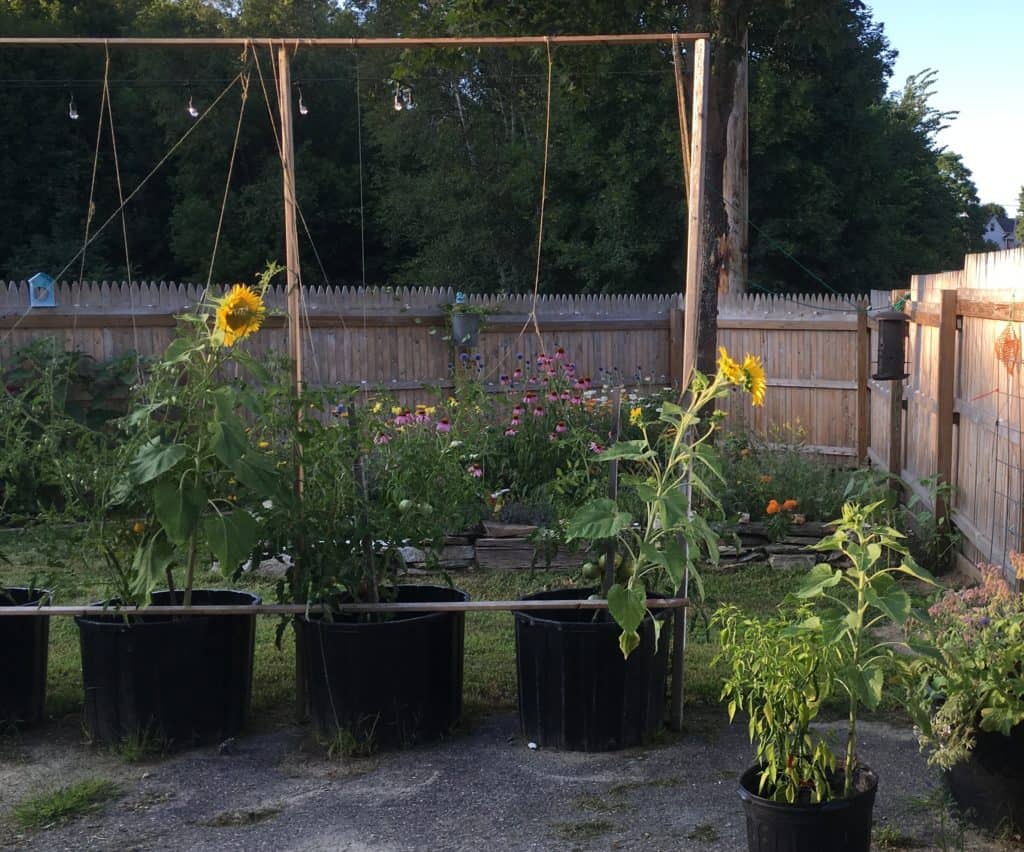
By Bonnie Kirn Donahue, extension master gardener, University of Vermont
If you’re inspired to have a garden this year, but don’t have a lot of space, consider container gardening. These are easy to maintain, can be large or small to fit your needs and are a satisfying alternative to traditional in-ground vegetable gardening.
If you are new to gardening, start with plants that are easy to grow. Herbs like parsley, chives, cilantro or tarragon are useful in many culinary dishes and will grow happily in a properly prepared container.
Plants such as lettuce and kale are easy plants to grow as well and can be surprisingly bountiful in the right conditions. For more of a challenge, plant tomatoes, peppers or even cucumbers in a container. As with any garden, the key to success is to prepare a supportive growing environment and keep up with summer maintenance.
Before getting started, make sure you have a large enough container to support the plants. Crops with larger root systems, such as summer squash and tomatoes, will need bigger containers, for example. The larger soil volume will hold moisture more effectively and provide space for the roots to spread out.
The container you select should have ample drainage holes near the bottom to let excess water out. I like to recycle empty cow lick buckets as planting containers as these are large enough to support a full-grown tomato plant or multiple heads of lettuce. I pre-drill holes in these containers with a power drill before filling them with soil.
Because container gardens sit above the ground, they are exposed to air and sunlight, which makes the soil dry out fast. Even larger containers may need to be watered daily during hot summer days.
While a recently dried-out plant can come back to life and look unchanged, tasting plants such as lettuce or cucumbers at harvest will reveal a different story. Drying out causes the leaves and fruit to become bitter and unappetizing. Tomatoes can crack or split with extreme moisture fluctuations. So keep a hose nearby or get a sturdy watering can to help make this daily chore easier.
Soil composition also is critical for the success of your container garden. Shoveling soil from the ground or garden into containers will create dense soil that has trouble draining and supporting roots. Lightweight and airy potting soil is a better option and is sold in bags or in bulk at your local garden center.
A limitation of potting soil is its lack of nutrients. Plan to use a water-soluble fertilizer that can be applied directly to the soil during watering, or add a slow release fertilizer when you plant the seedlings. Look for low-phosphorus fertilizer, and be sure to follow the directions carefully.
Before putting plants in the soil, resist the urge to fill your container with plants. It may look empty at first, but if the plants are happy, they will quickly grow into the space. Placing plants too closely together invites disease and insect damage.
Finally, make sure to consider the sun/shade requirements for your plants when choosing a place for your container. Plants such as parsley or lettuce are happy with part sun/part shade, but tomatoes and peppers will be happier in full sun.
Although there is a lot of prep work, after a couple of seasons it will become second nature. We can all cultivate a garden, regardless of size, space or experience. Start small and see where container gardening can take you.
For more information, visit go.uvm.edu/containergardening.




